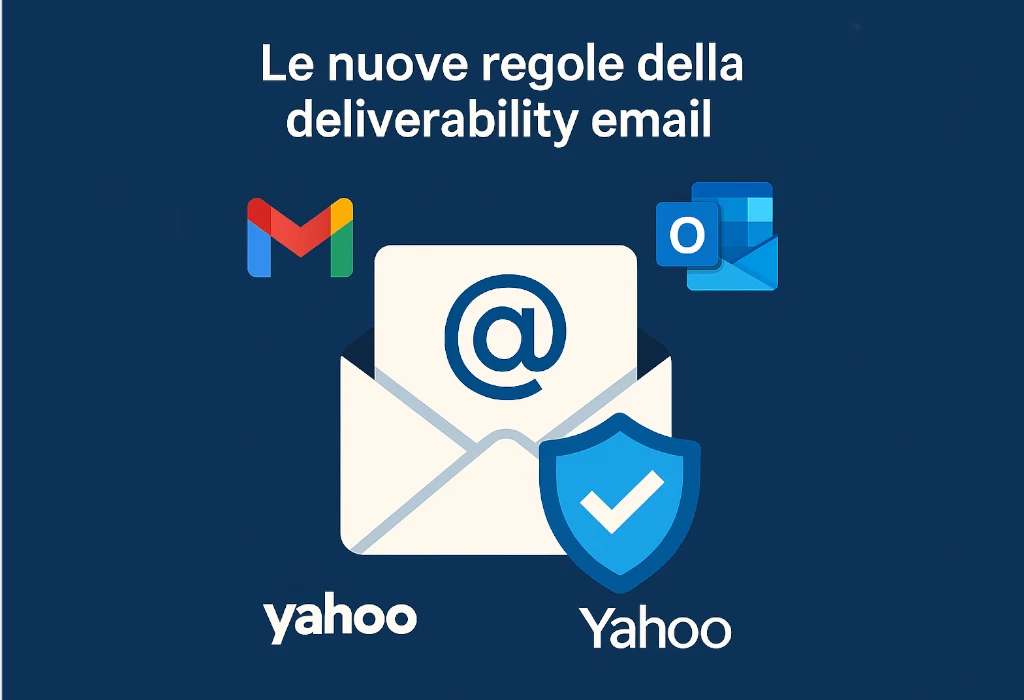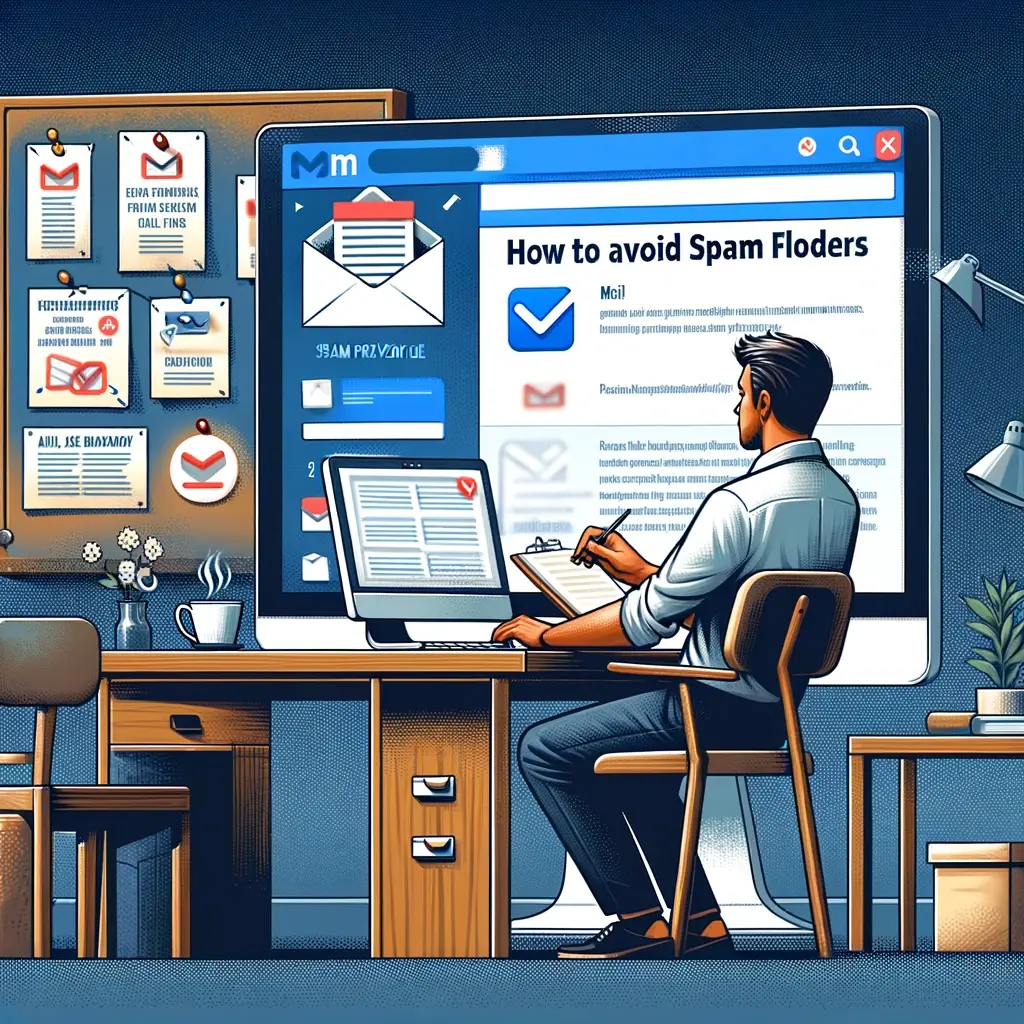An in-depth analysis of the transformations redefining the future of email marketing
📧 Introduction: 2025, the turning point year
2025 marks a point of no return in the world of email deliverability. Major providers – Gmail, Microsoft, Yahoo – since 2024 have begun implementing new rules that are radically transforming how emails reach their destination. These are no longer just best practices, but mandatory requirements to survive in the digital market.
This report analyzes the main innovations, their implications for email marketers, and strategies to successfully adapt to this new paradigm.
🔍 Chapter 1: Gmail’s new rules
1.1 Authentication becomes mandatory
Gmail has made SPF, DKIM and DMARC authentication mandatory for all senders. It’s no longer a recommendation, but a fundamental requirement. Emails without complete authentication are automatically redirected to spam folders or rejected.
What this means in practice:
– SPF: Must be correctly configured to authorize sending servers
– DKIM: Digital signature must be valid and verifiable
– DMARC: Must be implemented with appropriate policies (p=quarantine or p=reject).
1.2 The new reputation system
Gmail has introduced a more sophisticated reputation algorithm that considers:
– Engagement rate (opens, clicks, replies)
– Complaint rate (spam reports)
– Bounce rate (undeliverable emails)
– Sender history (behavior over last 30 days)
1.3 Volume and frequency requirements
New sending volume limitations:
– Preferably maximum 5,000 emails per day for new senders
– Gradual increase based on positive performance
– 24-hour cooldown period after authentication errors
Note: If you recently started using Infomail systems, like any other newsletter system, a gradual warm-up plan is necessary. If you’re a new Infomail client, contact us.
Spam complaints rate
Gmail/Yahoo require spam complaint rates (users manually marking communication as spam) ideally < 0.1% (max 0.3%) to maintain good sender reputation
🏢 Chapter 2: Microsoft Outlook and new challenges
2.1 The BCL system (Bulk Complaint Level)
Microsoft has implemented a more rigorous scoring system:
– BCL 0-3: Normally delivered emails
– BCL 4-7: Filtered or blocked emails
– BCL 8-9: Complete sender blocking
2.2 Advanced authentication requirements
Microsoft requires:
– SPF with correctly configured TXT records
– DKIM with RSA keys of at least 1024 bits
– DMARC with policy no lower than “quarantine”
2.3 The new anti-malware filter
Outlook has improved its anti-malware filter which now analyzes:
– Email content for suspicious links
– Attachments for malware and viruses
– Sender behavior for suspicious patterns
📊 Chapter 3: Yahoo and new metrics
3.1 Yahoo’s scoring system
Yahoo has introduced a scoring system based on:
– Sender Score (sender reputation)
– Content Score (content quality)
– Engagement Score (user interaction)
🎯 Chapter 4: adaptation strategies
4.1. Complete authentication implementation
Step 1: SPF Configuration
⚠️ IMPORTANT: Don’t delete existing SPF records! If using Infomail systems, add “include:sender.infomail.it” to the current record.
Modification example:
Existing SPF record:
v=spf1 include:_spf.google.com ~all
After modification (add include:sender.infomail.it):
v=spf1 include:_spf.google.com include:sender.infomail.it ~all
General rule: keep all existing includes and add “include:sender.infomail.it” to the list.
Warm up: when using a new sender, you need to warm it up and familiarize the associated mailbox with Infomail’s new SMTPs by sending gradually increasing volumes daily.
Step 2: DKIM Configuration
– Generate RSA keys of at least 1024 bits
– Configure TXT record: if using Infomail the selector is “catapulta”
– Verify signature with online tools
Contact Infomail’s team to configure DKIM and receive the key.
Step 3: DMARC Configuration
DMARC instructs email clients how to handle emails that fail SPF or DKIM.
Available DMARC policies:
– p=none: Monitoring only, no action (recommended only for starting)
– p=quarantine: Failed emails go to spam (intermediate phase)
– p=reject: Failed emails get blocked (maximum protection)
The value pct=100 indicates the DMARC policy applies to 100% of messages.
Example of gradual configuration:
Phase 1: Monitoring only (recommended for starting)
v=DMARC1; p=none; rua=mailto:youremail@yourdomain.com; ruf=mailto:youremail@yourdomain.com; pct=100
Phase 2: Partial quarantine (after verifying reports)
v=DMARC1; p=quarantine; rua=mailto:youremail@yourdomain.com; ruf=mailto:youremail@yourdomain.com; pct=25;
Phase 3: Complete quarantine
v=DMARC1; p=quarantine; rua=mailto:youremail@yourdomain.com; ruf=mailto:youremail@yourdomain.com; pct=100
Phase 4: Complete blocking (only after verifying everything works)
v=DMARC1; p=reject; rua=mailto:youremail@yourdomain.com; ruf=mailto:youremail@yourdomain.com
DMARC SPF/DKIM alignment
The domain in From: must align with SPF (Mail From) or DKIM (d=). Alignment can be “strict” (From: example.com; SPF/DKIM: example.com) or “relaxed” (From: newsletter.example.com; SPF/DKIM: example.com).
The relaxed parameter is implicit: it’s the default value, if you want to set as strict, you must add to DMARC the parameters “adkim=s → DKIM strict” and “aspf=s → SPF strict”.
4.2 Engagement strategies
Advanced segmentation:
– Divide list by engagement behavior
– Send personalized content
– Implement re-engagement campaigns
Content optimization:
– Catchy but non-spammy subject lines
– Relevant, valuable content
– Clear and visible call-to-actions
4.3 Monitoring and analytics
Essential metrics to monitor:
– Deliverability rate (target: >95%)
– Open rate (target: >20%)
– Click rate (target: >2%)
– Bounce rate (target: <2%)
– Complaint rate (target: <0.1%)
Monitoring tools:
– Google Postmaster Tools
– Microsoft SNDS (Smart Network Data Services)
– Yahoo Feedback Loop
– Third-party tools for in-depth analysis
🚀 Chapter 5: 2025 best practices
5.1 List building and management
Consensual acquisition:
– Mandatory double opt-in
– Clear consent process
– Consent documentation
List cleaning:
– Remove invalid emails
– Manage hard and soft bounces
– Re-engagement for inactive users
5.2 Timing and frequency
Optimal frequency:
– Newsletters: 1-2 times per week
– Promotional: maximum once per week
– Transactional: only when necessary
Strategic timing:
– Analyze open data to find best times
– Consider recipients’ time zones
– Avoid weekend sends
5.3 Personalization and relevancy
Advanced segmentation:
– By purchase behavior
– By demographics
– By content preferences
Personalized content:
– Recipient’s name
– Viewed products
– Purchase history
– Expressed preferences
📈 Chapter 6: 2025 metrics and KPIs
6.1 Deliverability metrics
Deliverability Rate:
– Excellent: >98%
– Good: 95-98%
– Acceptable: 90-95%
– Critical: <90%
Inbox Placement Rate:
– Excellent: >95%
– Good: 90-95%
– Acceptable: 85-90%
– Critical: <85%
6.2 Engagement metrics
Open Rate:
– Excellent: >30%
– Good: 20-30%
– Acceptable: 15-20%
– Critical: <15%
Click Rate:
– Excellent: >5%
– Good: 2-5%
– Acceptable: 1-2%
– Critical: <1%
6.3 Quality metrics
Bounce Rate:
– Excellent: <1%
– Good: 1-2%
– Acceptable: 2-5%
– Critical: >5%
Complaint Rate:
– Excellent: <0.05%
– Good: 0.05-0.1%
– Acceptable: 0.1-0.2%
– Critical: >0.2%
🔧 Chapter 7: tools and technologies
7.1 Authentication tools
Verify SPF, DKIM, DMARC:
– MXToolbox
– Google Admin Toolbox
– Dmarcian
7.2 Monitoring tools
Deliverability Monitoring:
– Mail Tester
– Sender Score
– GlockApps
Advanced Analytics:
– Google Analytics 4
🎯 Chapter 8: future strategies
8.1 Automation and AI
Content automation:
– Dynamic emails
– AI-generated content
8.2 Omnichannel integration
Integration with other channels:
– Social media
– Retargeting ads
8.3 Privacy and Compliance
GDPR and Privacy:
– Explicit consent
– Right to erasure
– Data usage transparency
New Regulations:
– CCPA (California)
– LGPD (Brazil)
– PIPEDA (Canada)
📋 Chapter 9: implementation checklist
9.1 Pre-send checklist
– [ ] SPF authentication configured
– [ ] DKIM authentication configured
– [ ] DMARC authentication configured
– [ ] Clean and updated list
– [ ] Optimized content
– [ ] Tested subject line
– [ ] Clear call-to-actions
– [ ] Verified links
– [ ] Tested on different email clients
9.2 Post-send checklist
– [ ] Deliverability monitoring
– [ ] Engagement metrics analysis
– [ ] Bounce management
– [ ] Unsubscribe management
– [ ] Complaint analysis
– [ ] Strategy updates
– [ ] List cleaning
– [ ] Next send planning
🎯 Chapter 10: conclusions and recommendations
10.1 The new rules are here to stay
The new 2025 deliverability rules aren’t temporary. They represent a permanent change in how emails are handled and delivered. Providers are becoming increasingly rigorous in protecting users.
10.2 Adaptation is the key to success
Email marketers who quickly adapt to these new rules will have significant competitive advantage. Those who continue with old practices risk seeing their performance collapse.
10.3 Invest in quality
The future of email marketing belongs to those who invest in:
– Content quality
– Robust authentication
– User engagement
– Regulatory compliance
10.4 Final recommendations
1. Implement immediately complete authentication
2. Improve content quality
3. Constantly monitor metrics
4. Adapt strategies based on results
5. Invest in team training
📚 Additional Resources
Official Documentation
– [Microsoft SNDS]
—
This report represents a comprehensive guide to navigating the new 2025 deliverability rules. The key to success is rapid adaptation and implementation of solid best practices.
Author: Infomail Team
Date: July 2025



